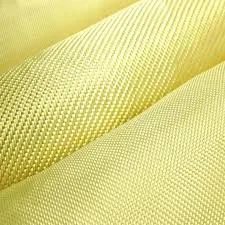Unidirectional aramid fiber fabric is a versatile material that finds applications in various industries due to its exceptional strength, lightweight nature, and resistance to heat and chemicals. The unique properties of aramid fiber make it a preferred choice for applications that require high-performance and reliable solutions. In this article, we will explore the applications and advantages of unidirectional aramid fiber fabric, with a focus on the expertise and solutions provided by Hengzhong, a leading company in the field.
I. Understanding Unidirectional Aramid Fiber Fabric
Unidirectional aramid fiber fabric is composed of aramid fibers, which are synthetic fibers with high strength and heat-resistant properties. These fibers are arranged in a parallel direction, providing excellent tensile strength in that specific direction. The unidirectional arrangement of fibers enhances the fabric's performance and makes it suitable for various applications.

II. Applications of Unidirectional Aramid Fiber Fabric
Aerospace Industry:
a. Aircraft Components: Unidirectional aramid fiber fabric is used in the manufacturing of aircraft components such as wings, fuselages, and rotor blades. Its high strength-to-weight ratio contributes to lightweight structures without compromising on strength and durability.
b. Spacecraft Applications: The exceptional heat resistance and mechanical properties of aramid fiber make it suitable for spacecraft applications, including heat shields, protective covers, and structural reinforcements.
Automotive Industry:
a. Lightweight Structures: Unidirectional aramid fiber fabric is utilized in the automotive industry to create lightweight structures that enhance fuel efficiency without compromising on safety. It is used in components such as body panels, chassis reinforcements, and interior parts.
b. Ballistic Protection: Aramid fiber fabric is employed in the production of bulletproof panels and armor for vehicles, providing reliable protection against ballistic threats.
Sporting Goods:
a. Sports Equipment: Unidirectional aramid fiber fabric is widely used in the production of sports equipment such as tennis rackets, hockey sticks, and bicycle frames. The high strength and lightweight nature of the fabric contribute to improved performance and maneuverability.
b. Protective Gear: Aramid fiber fabric is also utilized in the manufacturing of protective gear for sports such as helmets, gloves, and body armors, offering enhanced impact resistance and protection.
Industrial Applications:
a. Conveyor Belts: Unidirectional aramid fiber fabric is used in the production of conveyor belts for industries such as mining, cement, and steel. Its high tensile strength and resistance to abrasion make it suitable for carrying heavy loads and withstanding harsh environments.
b. Reinforcement in Composites: Aramid fiber fabric is incorporated into composite materials to improve their mechanical properties, including strength, stiffness, and impact resistance. It is commonly used in applications like wind turbine blades, pipes, and pressure vessels.
III. Advantages of Unidirectional Aramid Fiber Fabric
High Strength-to-Weight Ratio: Unidirectional aramid fiber fabric offers exceptional strength while being lightweight, making it ideal for applications where weight reduction is crucial.
Excellent Mechanical Properties: Aramid fiber fabric exhibits high tensile strength, outstanding impact resistance, and good fatigue resistance, ensuring reliable performance in demanding environments.
Heat and Flame Resistance: Aramid fibers possess excellent resistance to heat and flames, making the fabric suitable for applications that involve high temperatures or fire hazards.
Chemical Resistance: Unidirectional aramid fiber fabric demonstrates resistance to various chemicals, acids, and solvents, making it suitable for applications where exposure to such substances is expected.
Dimensional Stability: Aramid fiber fabric maintains its shape and dimensional stability even under extreme conditions, ensuring long-term performance and durability.

IV. Hengzhong: Your Expert Provider of Unidirectional Aramid Fiber Fabric
HengZhong High Performance Fiber Products Co., Ltd. is founded in 2020, specializing in the production of high performance fiber fabrics. HengZhong mainly uses carbon fiber, aramid fiber, and basalt fiber as raw materials for weaving fabrics. The main products include carbon fiber fabric, aramid fiber fabric, basalt fiber fabric, hybrid fiber fabric, woven tape, and prepreg. Our products are not only applied in the aerospace field but also to a wide range of civil markets, such as automotive components, ship yachts, sports equipment and medical equipment.
V. Safety Considerations
Personal Protective Equipment (PPE): When working with unidirectional aramid fiber fabric, it is important to wear appropriate PPE such as gloves, safety glasses, and masks to protect against any potential skin irritation or inhalation of fibers.
Proper Handling and Storage: Follow the manufacturer's guidelines for proper handling, storage, and disposal of unidirectional aramid fiber fabric to ensure safety and prevent any damage to the fabric.
VI. Future Innovations
The field of aramid fiber continues to evolve, with ongoing research and development focused on enhancing its properties and exploring new applications. Stay updated on emerging innovations to benefit from improved performance, increased efficiency, andsustainability in your chosen industries.

Conclusion
Unidirectional aramid fiber fabric offers a wide range of applications and advantages across various industries. Its exceptional strength, lightweight nature, heat resistance, and chemical resistance make it a preferred choice for high-performance solutions. Companies like Hengzhong provide expertise in producing high-quality unidirectional aramid fiber fabric, ensuring reliable and efficient solutions for their customers. By understanding the applications and advantages of this versatile material, industries can harness its benefits to enhance performance, safety, and sustainability in their respective fields.

